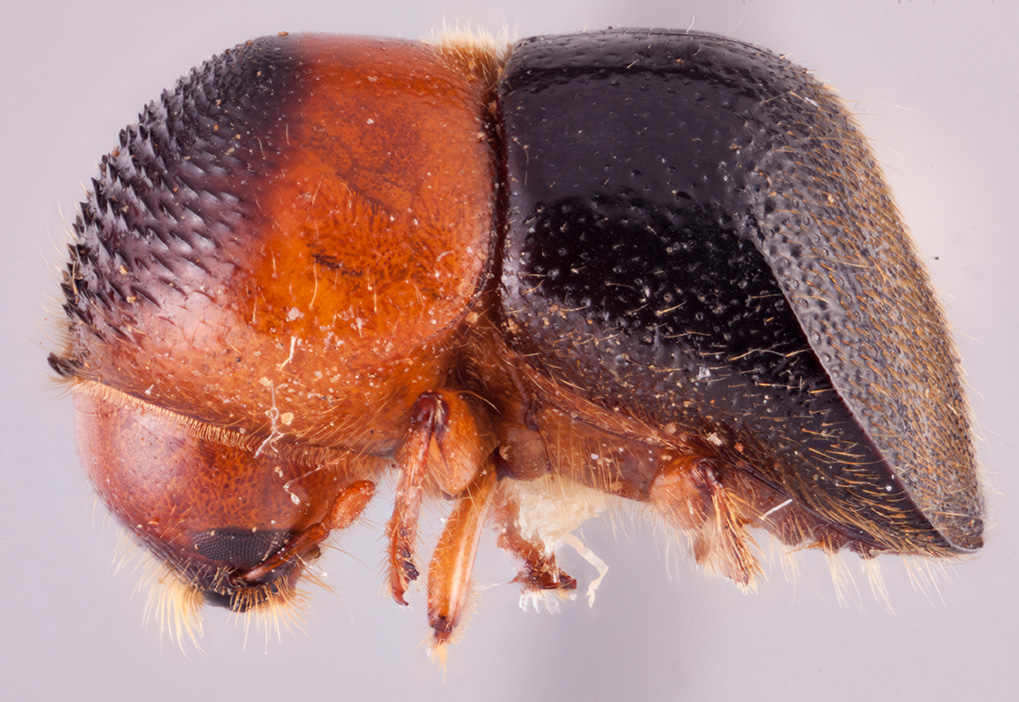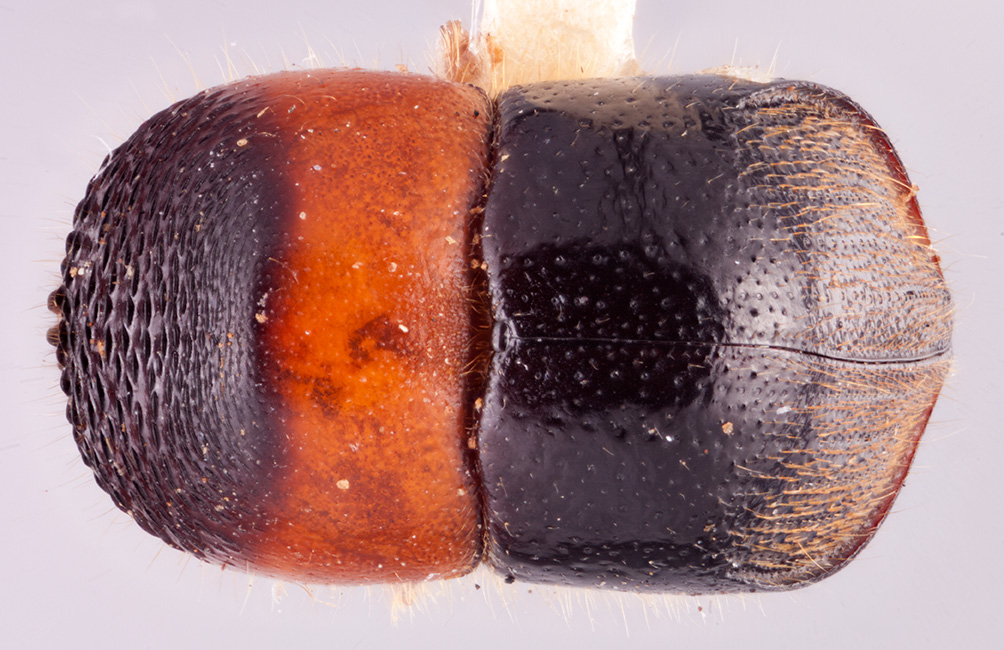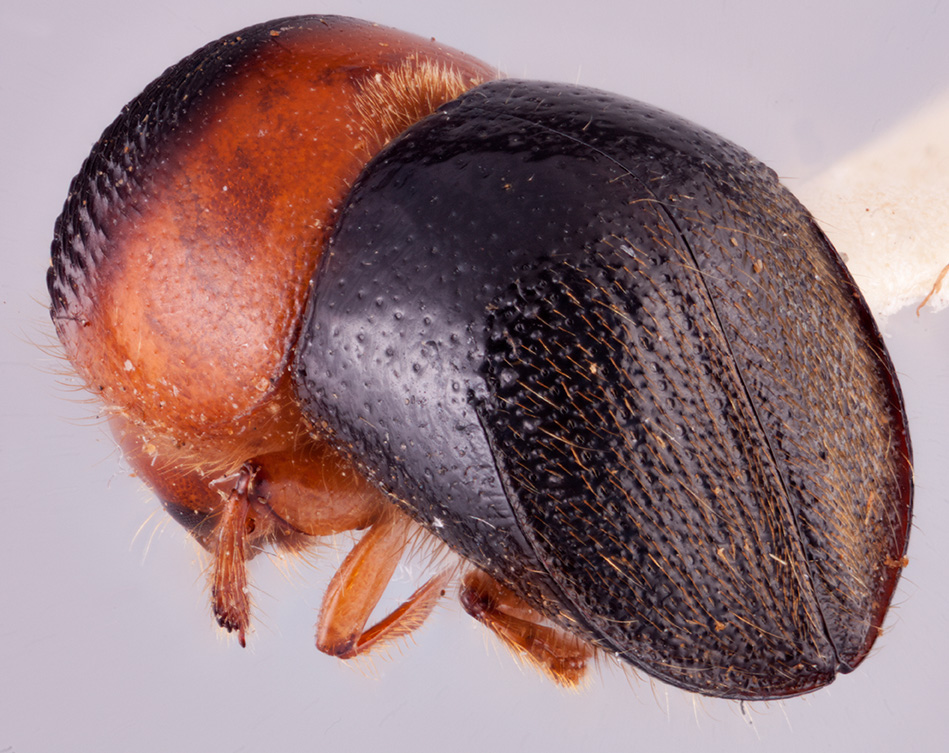Cnestus gravidus
|
Cnestus gravidus lateral; R.K. Osborn |
|
Cnestus gravidus dorsal; R.K. Osborn |
|
Cnestus gravidus declivity; R.K. Osborn |
|
Cnestus gravidus frontal; R.K. Osborn |
Taxonomic history
Xyleborus gravidus Blandford, 1898: 427.
Xylosandrus gravidus (Blandford): Wood and Bright, 1992: 796.
Cnestus gravidus (Blandford): Dole and Cognato, 2010: 529.
Diagnosis
5.0−5.5 mm long (mean = 5.34 mm; n = 5); 1.83−2.0 times as long as wide. This species can be distinguished by the presence of a mesonotal mycangial tuftmycangial tuft:
tuft of setae that denotes the mycangia exterior opening
 on the pronotalpronotal:
on the pronotalpronotal:
pertaining to the pronotum
basebase:
point or edge closest to the body; opposite of apex ; elytralelytral:
; elytralelytral:
pertaining to the elytra
discdisc:
the flat central upper surface of any body part (e.g. pronotum and elytra) short; elytralelytral:
short; elytralelytral:
pertaining to the elytra
declivitydeclivity:
downward slope of either the pronotum or elytra
 obliquely truncatetruncate:
obliquely truncatetruncate:
appearing cut off or suddenly shortened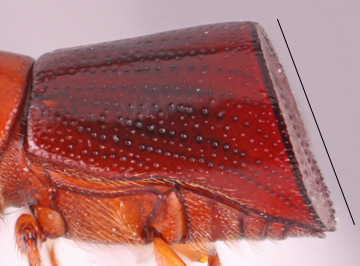 ; pronotumpronotum:
; pronotumpronotum:
the dorsal surface of the thorax
type 1 when viewed dorsally; antennalantennal:
pertaining to the antennae
club type 2, with two sutures visible on posteriorposterior:
toward the rear end; opposite of anterior
 face; antennalantennal:
face; antennalantennal:
pertaining to the antennae
funicle four-segmented; protibiaprotibia:
tibia of the first pair of legs
distinctly triangular; procoxae narrowly separated; posterolateralposterolateral:
relating to end of the side part/portion
 margin of elytraelytron:
margin of elytraelytron:
the two sclerotized forewings of beetles that protect and cover the flight wings
strongly carinate from apexapex:
point or edge furthest from the body; opposite of base
 to declivitaldeclivital:
to declivitaldeclivital:
pertaining to the elytral declivity
basebase:
point or edge closest to the body; opposite of apex along interstriaeinterstria:
along interstriaeinterstria:
longitudinal spaces along the elytra between the striae, which is not as<br />
impressed and bear smaller punctures.
 7; interstriaeinterstria:
7; interstriaeinterstria:
longitudinal spaces along the elytra between the striae, which is not as<br />
impressed and bear smaller punctures.
 granulategranulate:
granulategranulate:
pertaining to a coarse, grainy surface texture
 with a median row of long erecterect:
with a median row of long erecterect:
pertaining to setae that have their apices directed away from the body and appear straight
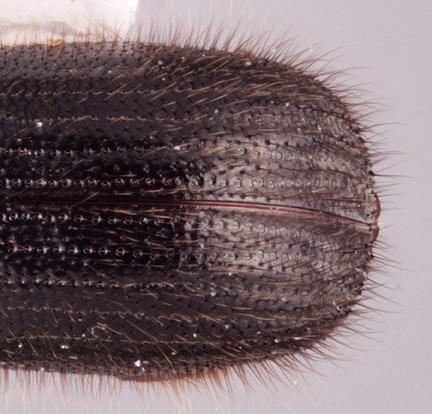 hairs, clearly distinct from the ground vestitureground vestiture:
hairs, clearly distinct from the ground vestitureground vestiture:
minute recumbent vestiture
; discdisc:
the flat central upper surface of any body part (e.g. pronotum and elytra) glabrous, shiningshining:
glabrous, shiningshining:
appearing glossy or bright in luster; referring to a surface that is polished and reflects light well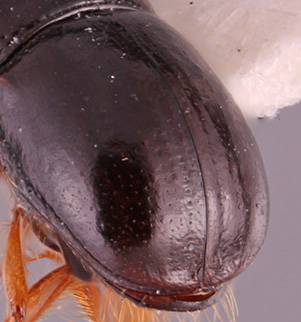 , discaldiscal:
, discaldiscal:
pertaining to the disc of either the pronotum or elytra
punctures sparse; and typically bicolored pronotumpronotum:
the dorsal surface of the thorax
with apicalapex:
point or edge furthest from the body; opposite of base
 half black and basalbase:
half black and basalbase:
point or edge closest to the body; opposite of apex half orange.
half orange.
May be confused with
Cnestus improcerus, C. mutilatus, and C. testudo
Distribution
Bangladesh, China (Hainan, Xizang, Yunnan), India (Arunachal Pradesh, Assam, Sikkim, West Bengal), Laos, Myanmar, Nepal, Sri Lanka, Thailand, Vietnam
Host plants
polyphagous (Beeson 1961Beeson 1961:
Beeson CFC. 1961. The ecology and control of the forest insects of India and the neighbouring countries. 2nd edition. Government of India, New Delhi, 767 pp.)
DNA data
Sequences available for COI and CAD.
CAD: MN620162

